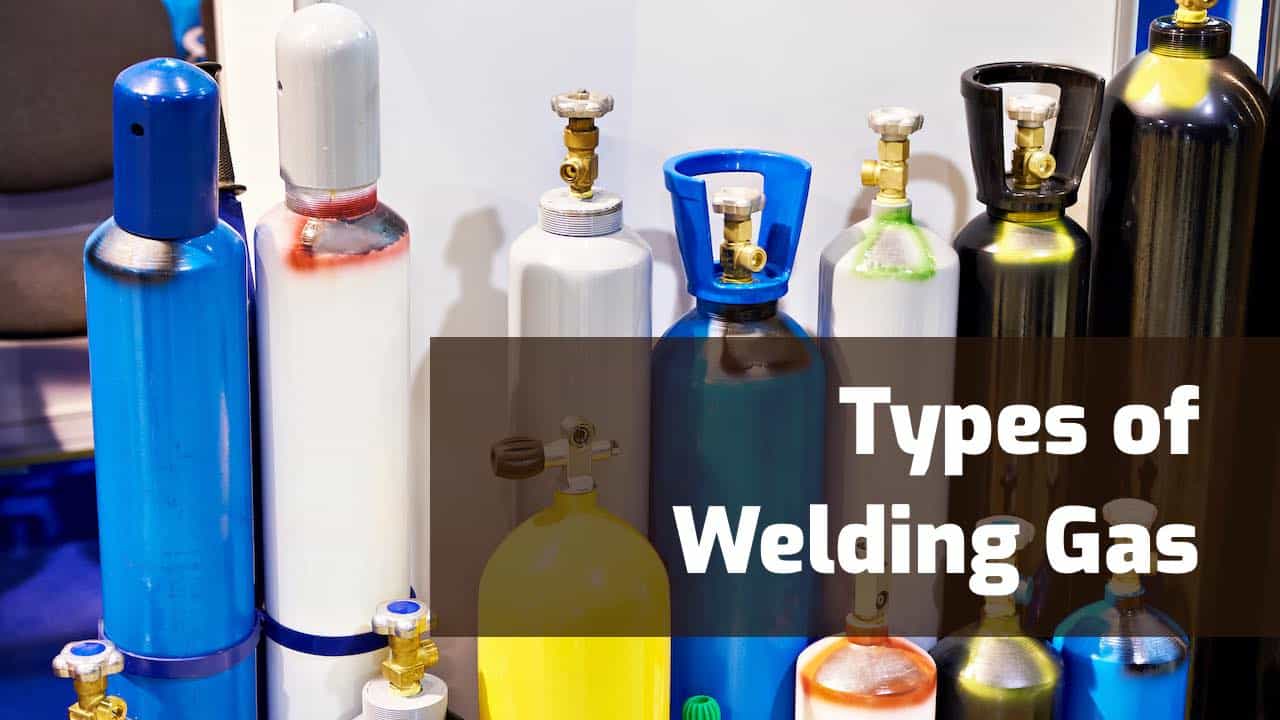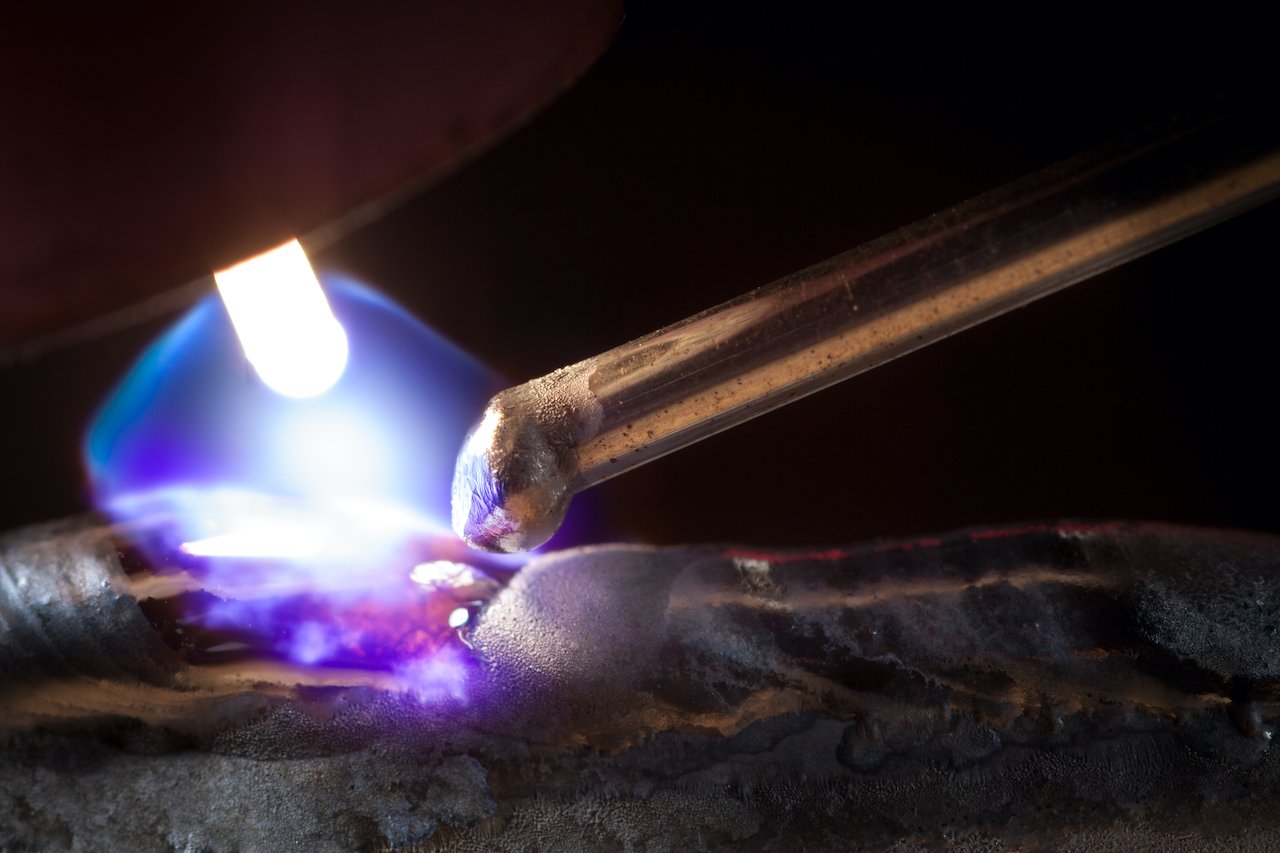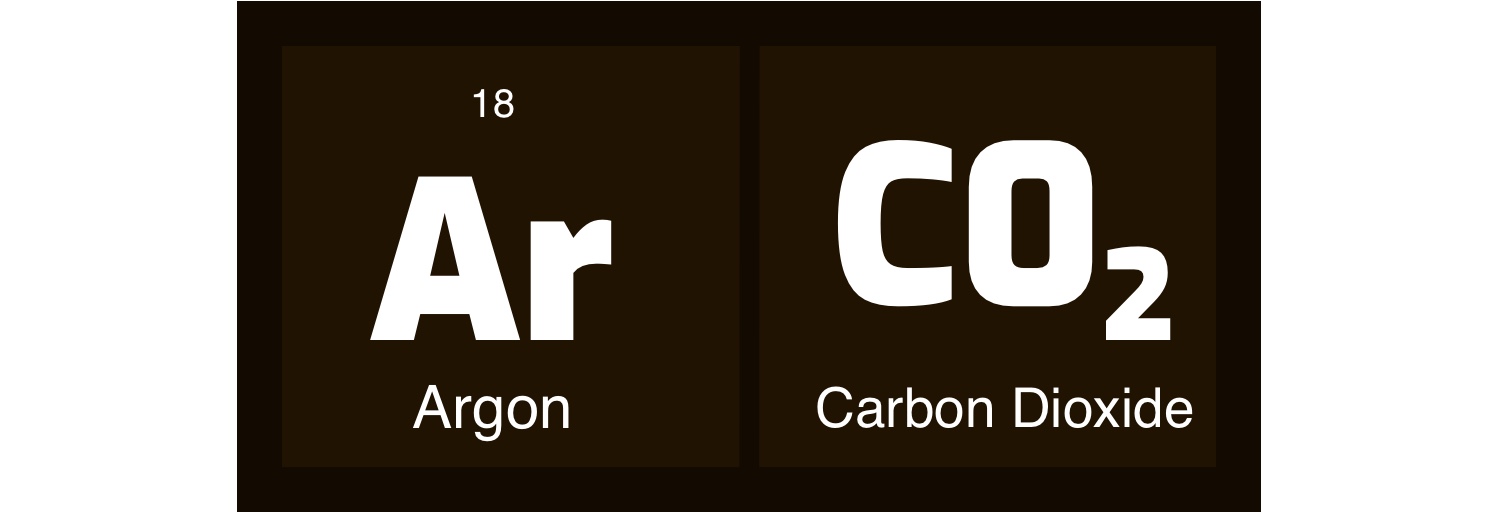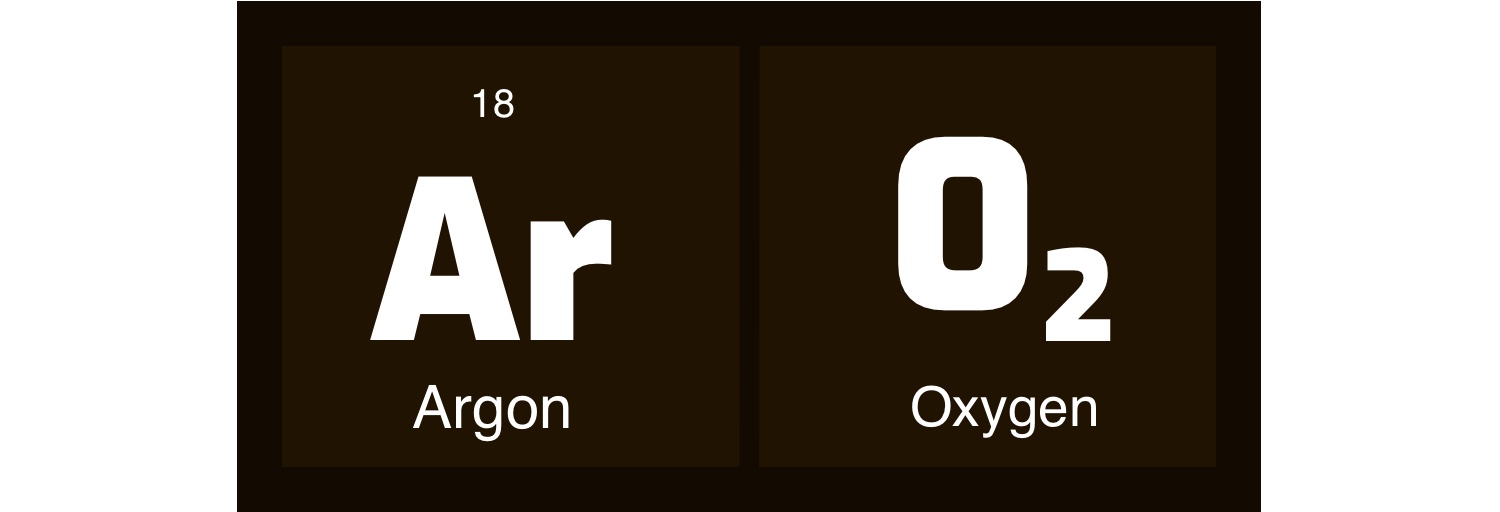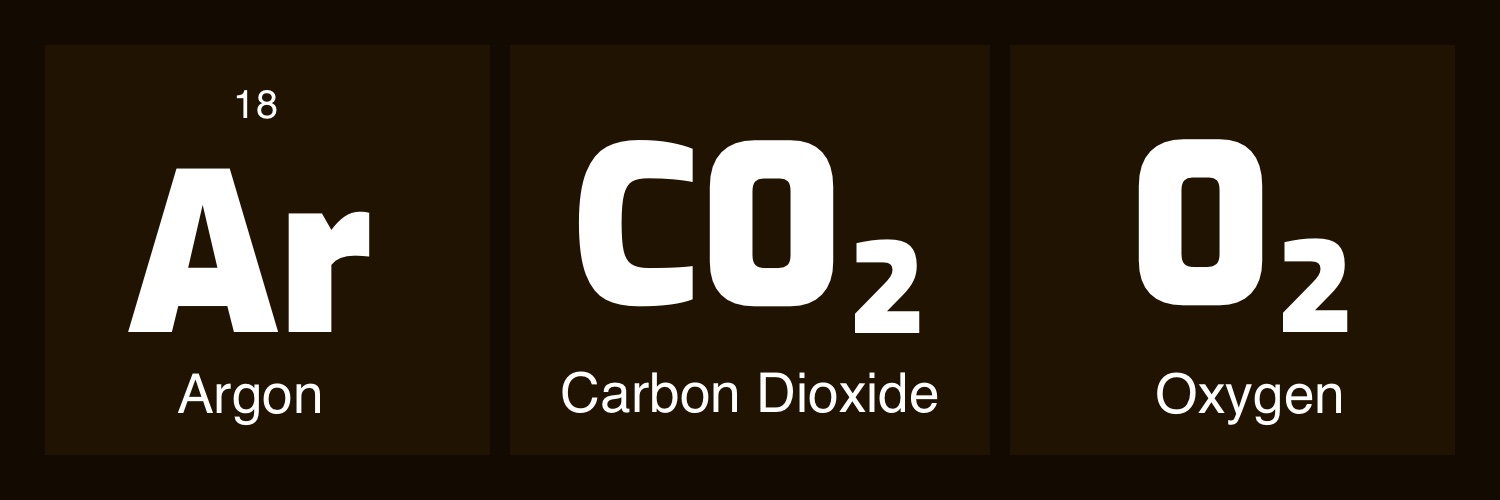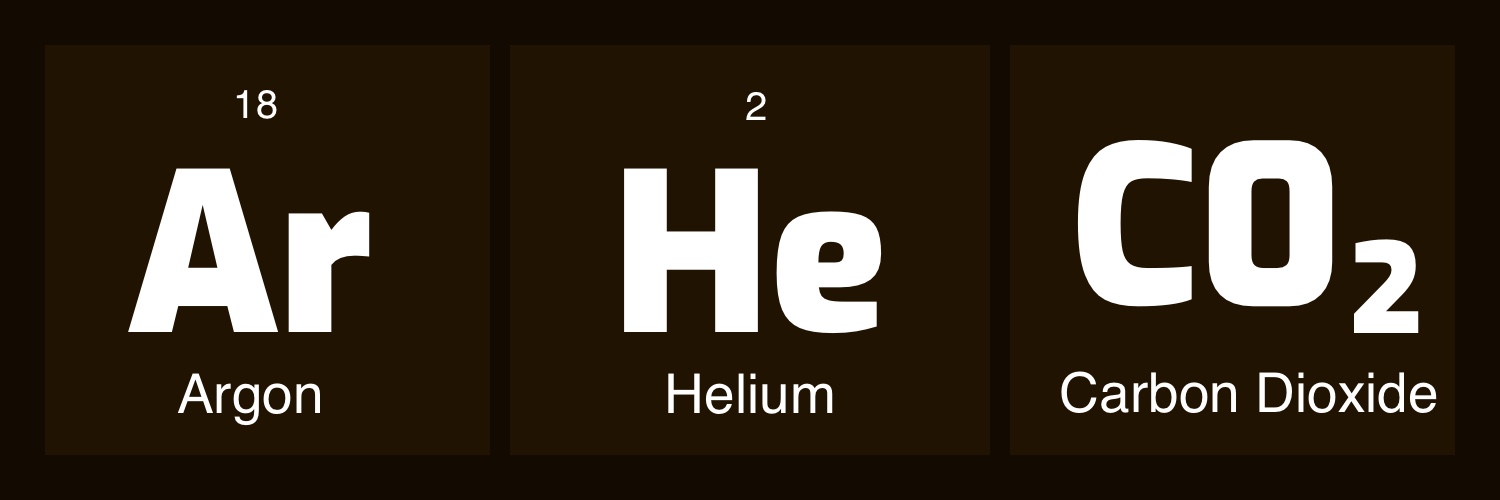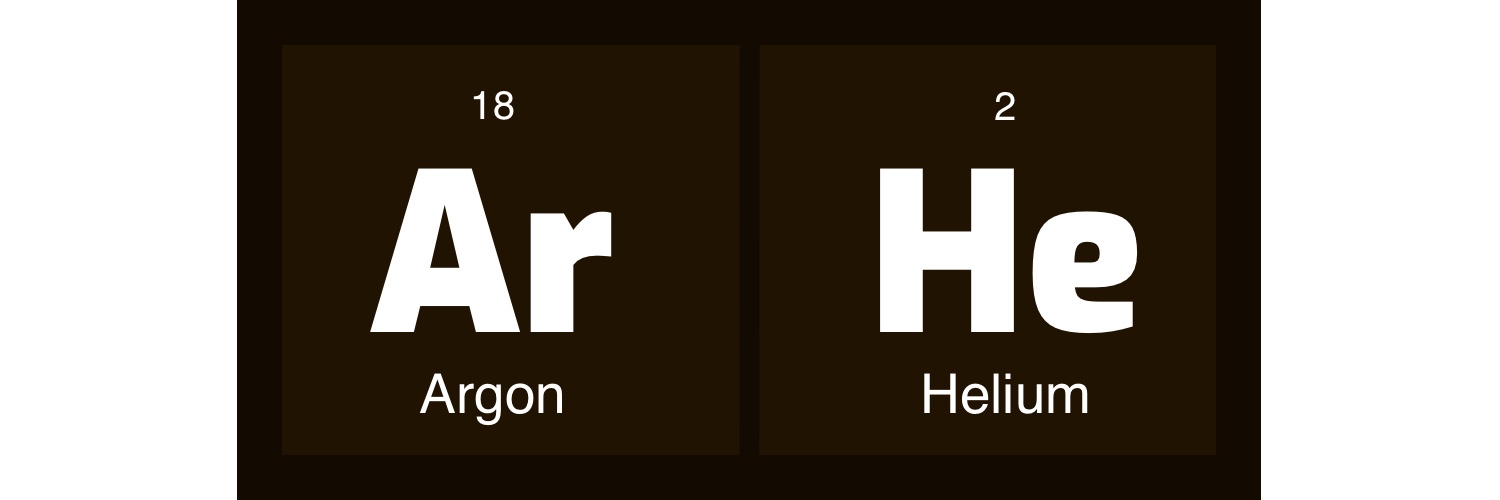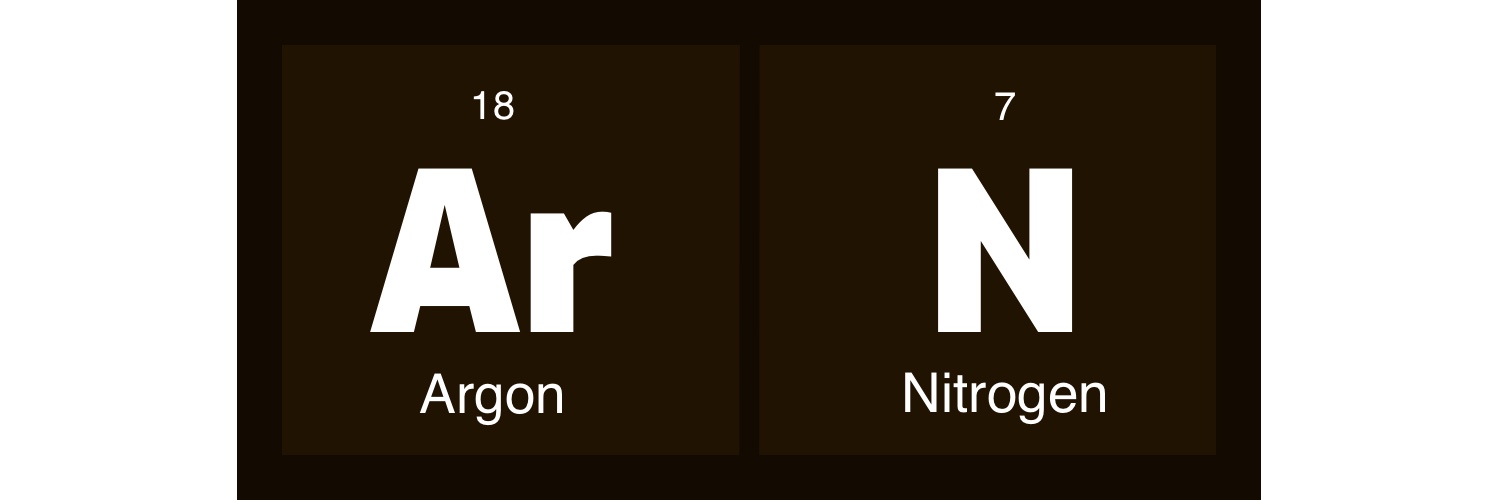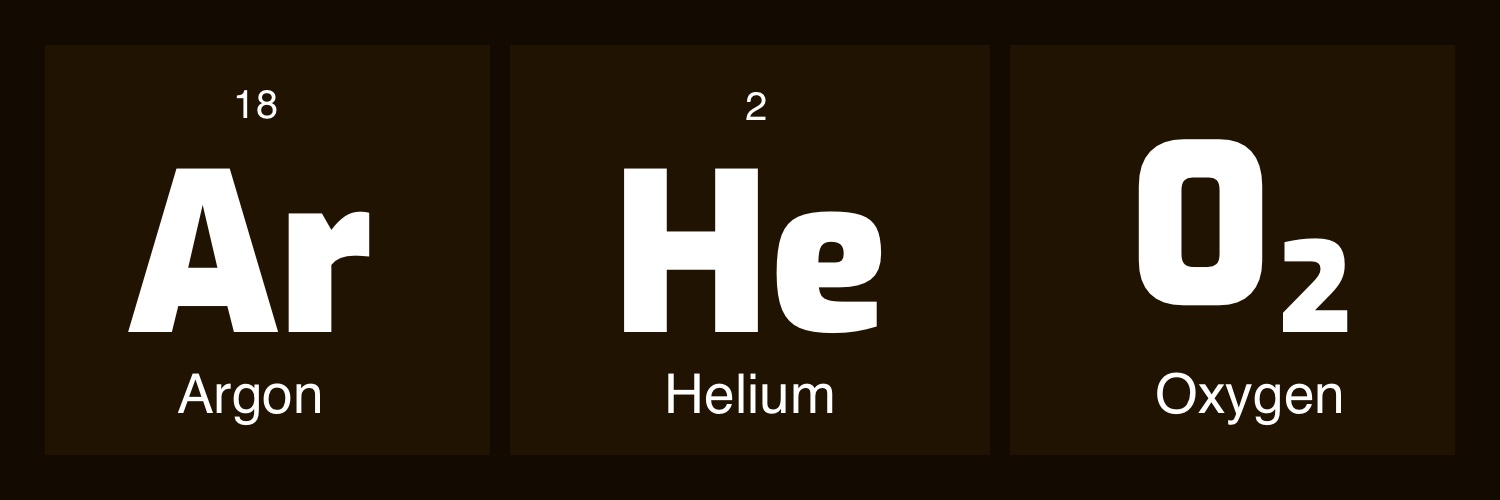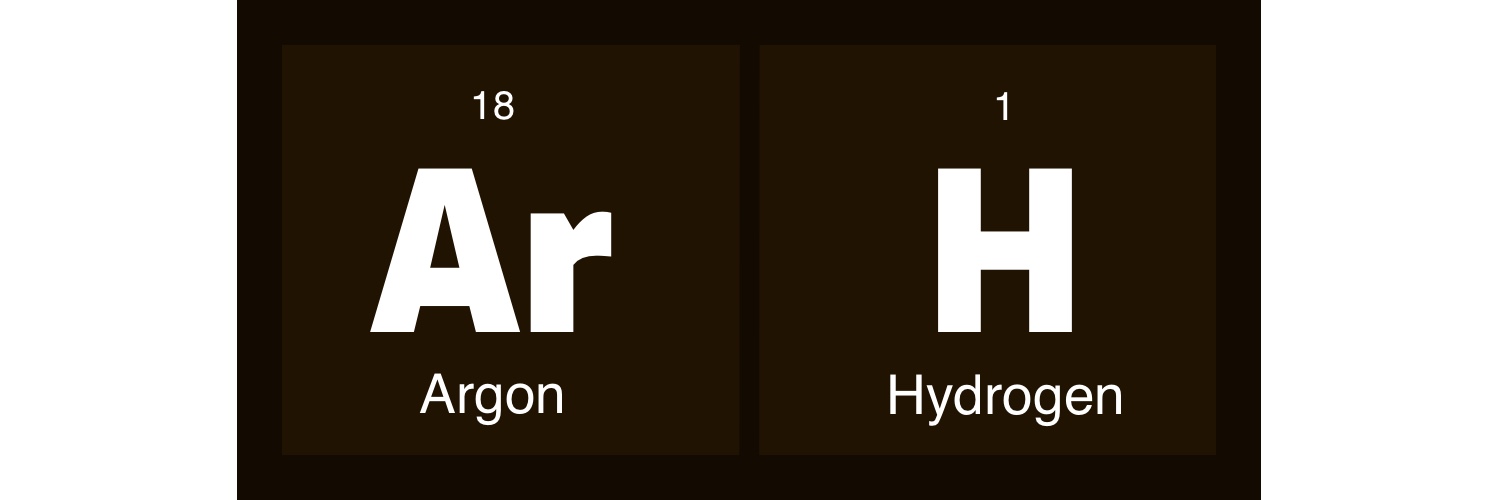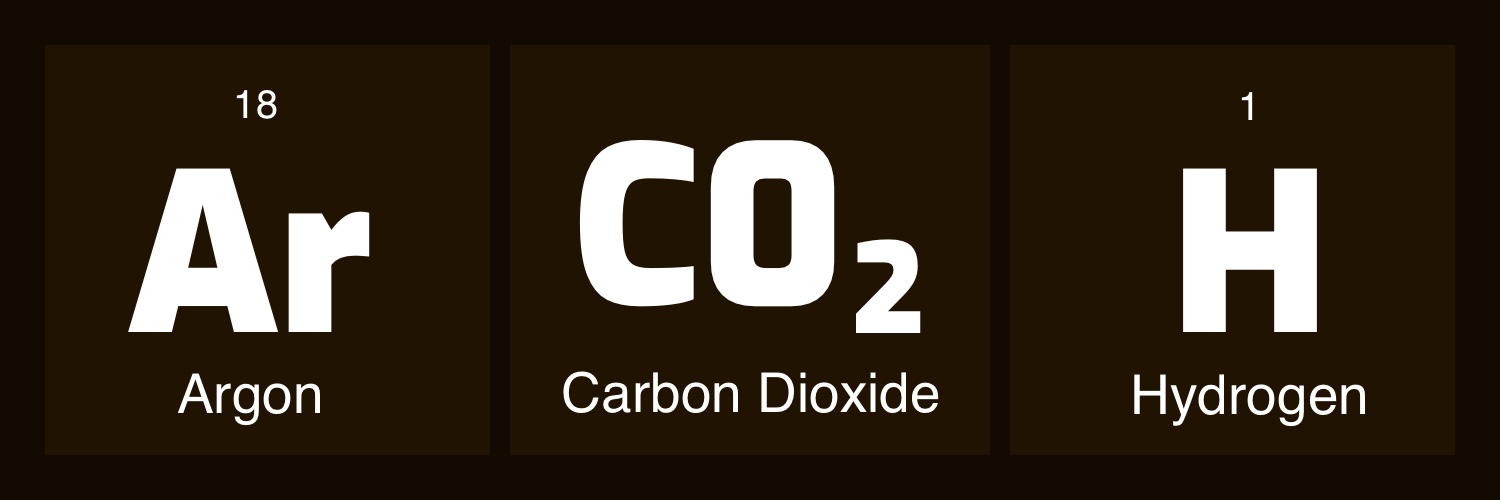If you’re new to welding, you may be wondering what all the different welding gases are what they are used for.
Welding gases are critical elements for a sleek, stable weld.
We use them to protect the weld from unwanted chemical reactions and influence the look and strength of the job.
In this article, we’ll explore the different types of welding gas and their uses.
Inert And Reactive Gases In Welding Explained
Before we dive into the types of welding gas and their uses, let’s take a quick but essential detour into inert vs. reactive gases.
Both can be used in welding for similar – or very different – effects.
The main difference in inert and reactive gases are in the names:
- Inert gases – are stable gases that have very low to zero chemical reactivity with their surroundings. They work strictly as a protectant and do not impact the resulting weld. Helium and argon are commonly used inert gases for welding.
- Reactive gases – well–react. Reactive gases combine chemically with the elements in the weld pool and can affect or change the properties of the metals in the weld. You can use these gases to change the nature of your weld. Reactive gases include nitrogen, oxygen, hydrogen, and carbon dioxide.
You may remember the term “noble gases” from high school chemistry. These six elements on the periodic table are stable, with the exact balance of electrons atoms want. These elements aren’t trying to hook up with other atoms to gain or lose electrons, so they tend not to react with their surroundings. Thus, the noble gases are usually inert, though some can react under certain conditions.
Beyond the noble gases, certain other compounds of more than one element can stabilize and become inert as well.
In welding, we will often combine an inert gas with one or two reactive gases at a very low concentration. The inert gas gives control to the weld and protects your metals from unwanted chemical processes. The reactive gases will make slight changes like adding more heat or changing the consistency of the filling metals.
In general, while it’s important to understand the difference between inert and reactive gases, the key is to master when and how to use them.
Why is Gas Used In Welding?
We use gases in welding for four primary reasons:
- Shielding
- Purging
- Blanketing
- Heating
Of course, welding produces gases and fumes, but we’re talking about the gases we actively use to influence the welding process.
Essentially, these gases are critical to the success of a lasting and robust weld. You can’t just melt two metals together and call it a day.
The extreme heat applied in a weld causes all kinds of potential for chemical reactions within the weld pool and with the air around the weld.
If you don’t control the environment precisely, you can end up with a bad weld or a severe reaction.
Let’s dig into the different uses for gas in welding why we need them.
Shielding Gas
Shielding is by far the most common use for gases in welding. Shielding gases do precisely what it sounds like they do – shield your weld from unwanted contaminants.
Think of it as a dome-like shield of gas over the welding pool, which is the place where the metals melt together. Although that’s not physically what’s happening, it’s a helpful mental picture.
You can supply shielding gases from an external source or by burning the electrode. Electrodes in specific welding processes have a coating that releases the gas under heat. The electrode is the conductor.
Why does a weld need shielding? To keep away contaminants.
By “contaminants,” we mean properties that will interact with the chemical processes or metals in the weld. Depending on the type of metals you’re welding, contaminants could include oxygen, nitrogen, water vapor, or other chemicals and elements in the environment around you.
Each of these can weaken or ruin a good weld. For example, if you’re welding steel, any excess oxygen can form carbon monoxide when it blends with carbon. The carbon monoxide gas will create slow bubbles in the final weld, which leaves it weak and porous. Oxygen can also interact with some metals and create oxidation or oxides in the form of particles or films trapped in the weld.
The presence of any contaminants will threaten to weaken a weld, leading to dangerous implications down the line.
Shielding gases displace the air around the weld, successfully keeping contaminants at bay. Additionally, reactive gases can do double duty and impact the final properties of the weld.
Related Read: The Cost of Welding Gases
Purging Gas
Purging gas is similar to shielding gas but is used underneath the weld joint rather than above it. Instead of a protective shield, purging gas pushes the unwanted contaminants away from the weld joint.
Purging gas is mainly used for a new weld where you’re combining two separate pieces for the first time. Once you get that first weld stable, you likely won’t need to use purging gas underneath anymore.
Purging is usually applied while welding stainless steel. To do it, you seal the base of the joint and then literally blow the purging gas across it to keep the area clear of contaminant elements.
Purging gases can be the same as shielding gases.
Blanketing Gas
Blanketing gas protects the metals after the weld is complete and as it cools. Think about it – you’ve put all this work into safeguarding your weld from contaminants – but when you finish welding, it’s still extremely hot and still vulnerable to unwanted reactions with the air around it.
Blanketing gas can be added to the tank or space where your weld is cooling. The gas ensures the purity of the area around the weld and keeps any unwanted gases or reactions from occurring.
Heating Gas
Heating gas preheats metals before welding. You will normally see this in gas welding or brazing for example
Depending on the metal, cracks can develop during the cooling process if it cools too quickly. Applying heat before the weld will ensure the metal cools more slowly and maintains its structure.
Heating gas is most often used when gas welding steel, which is most susceptible to cold cracks.
Related Read:
The Different Types of Welding Gases
So now that we have an understanding of the primary uses of gas in welding, it’s time to learn about exactly what the different types are and how they are used.
Pure Gases
We can divide the types of welding gas into two separate categories: pure gases and mixtures. You can use pure gases alone or in blends.
Argon (Ar)
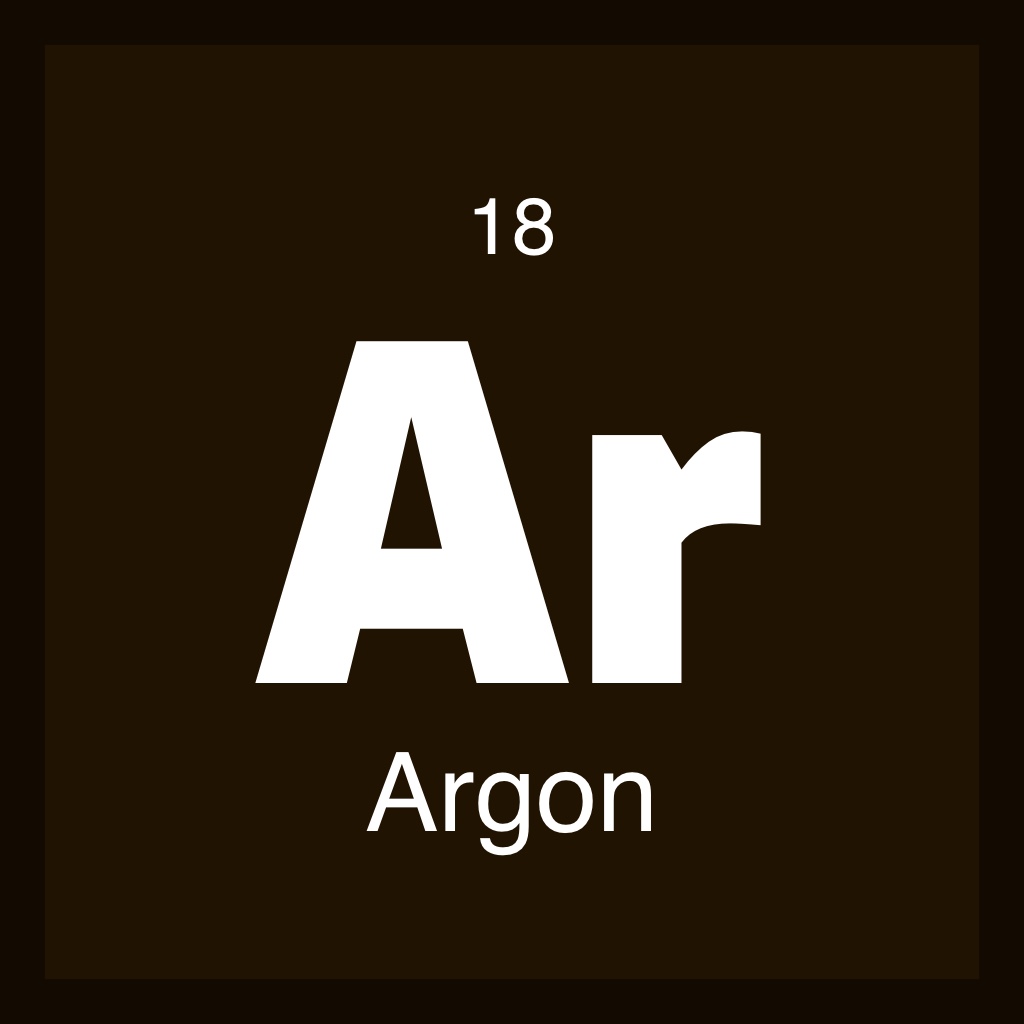
Another benefit of argon is that it has what we call low thermal conductivity. Low thermal conductivity means that it doesn’t pass heat easily. In a weld using argon gas, the heat is narrowly focused right at the arc column where the energy generates, which gives the weld a narrow and deep penetration.
Argon supports spray transfer when used as a shielding gas. Spray transfer is when the wire spits a fine mist of tiny droplets across the welding arc. Spray transfer contributes to deep and targeted penetration and doesn’t produce any spatter. Easy cleanup!
One downside of the lower heat is that your weld may produce bead rollover or undercutting. Bead rollover happens when the molten metal cools too quickly without fully fusing to the base metal. Undercutting is almost the opposite – a hollowed-out groove near the base of the weld, where the metal cooled before it could fill all the way in.
In general, we use argon when we need a nonreactive gas and a very precise weld.
Helium (He)
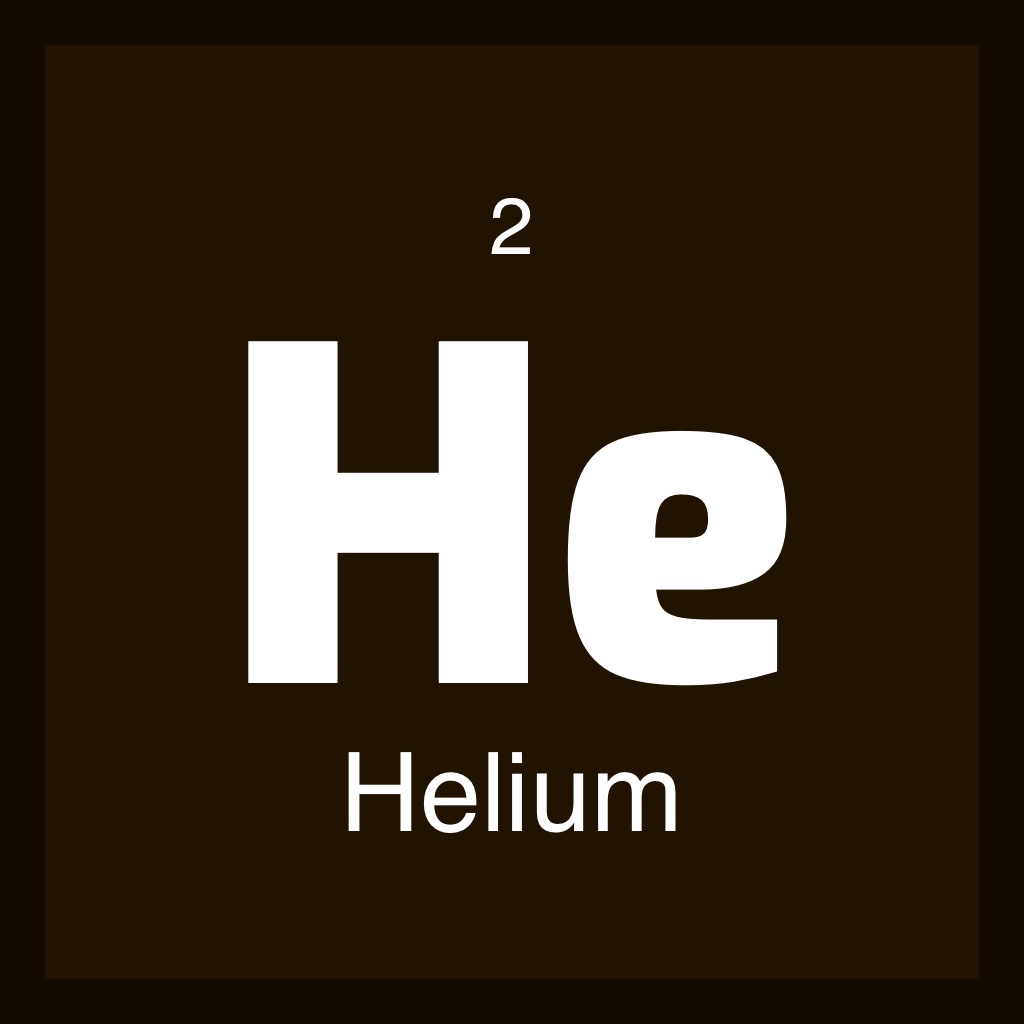
Because of the wider heat profile, the bead edges tend to stay wetter and fuse more easily. Instead of spray transfer, helium promotes a globular transfer. Larger “globs” of molten electrode drop with the force of gravity into the weld pool.
Globular transfer gives you a higher deposition rate, meaning the number of pounds of filler metal added to the base metal per hour. The higher the deposition rate, the more efficient (and usually less costly) the weld. However, you can only use this type of welding on a flat or horizontal base, and you will also get more spatter.
With helium, you will likely need higher flow rates as well because–as we all know–helium rises. You’ll need to keep applying more gas at a higher rate.
Carbon Dioxide (CO2)
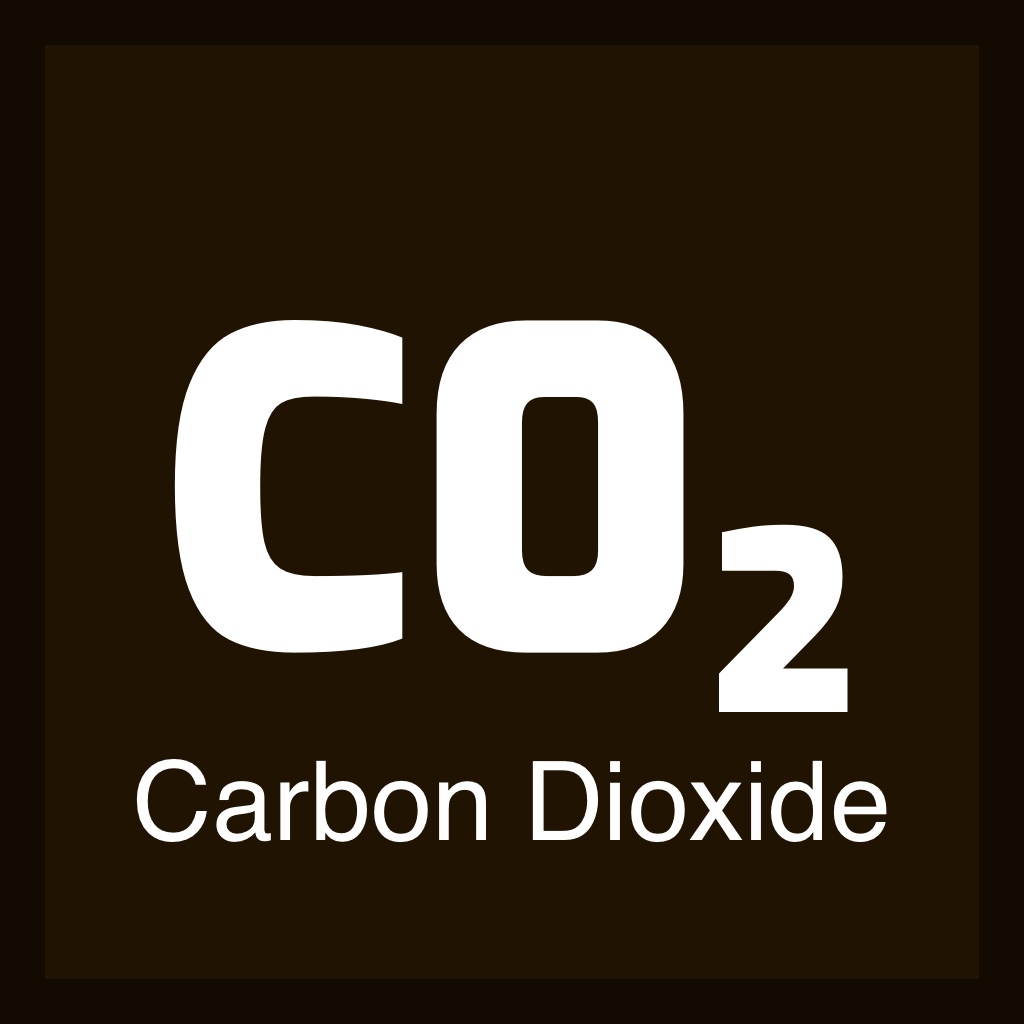
Most reactive gases work in combination with an inert gas. However, we can use carbon dioxide in its pure form for interesting effects. The gas produces a very deep weld with a comparable width. While it doesn’t make as precise a weld as argon, carbon dioxide is useful on very thick materials. However, it also promotes globular transfer and creates a good deal of spatter.
Carbon dioxide is the cheapest of the most common shielding gases – the other three most common being argon, helium, and oxygen.
Gases Used in Mixtures
Some gases need to be mixed with others before they’re useful in welding. Here are the three gases we use in mixtures.
Oxygen (O2)
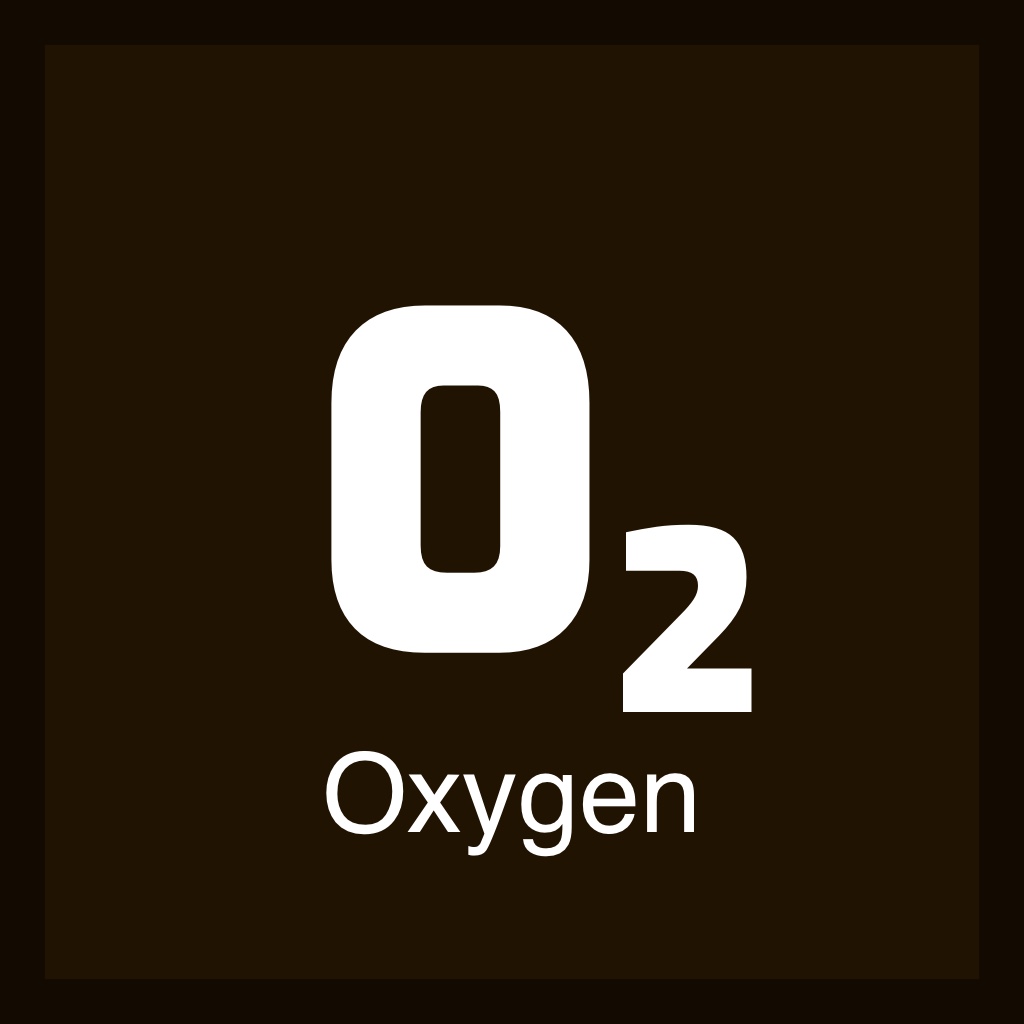
Oxygen contributes high energy and heat to the weld but creates a reasonably broad but not deep weld. The highest heat remains at the surface.
Oxygen helps any burning process by increasing the temperature and rate of combustion, which is why it is used along with the gases described on this page in a separate cylinder.
Nitrogen (N)
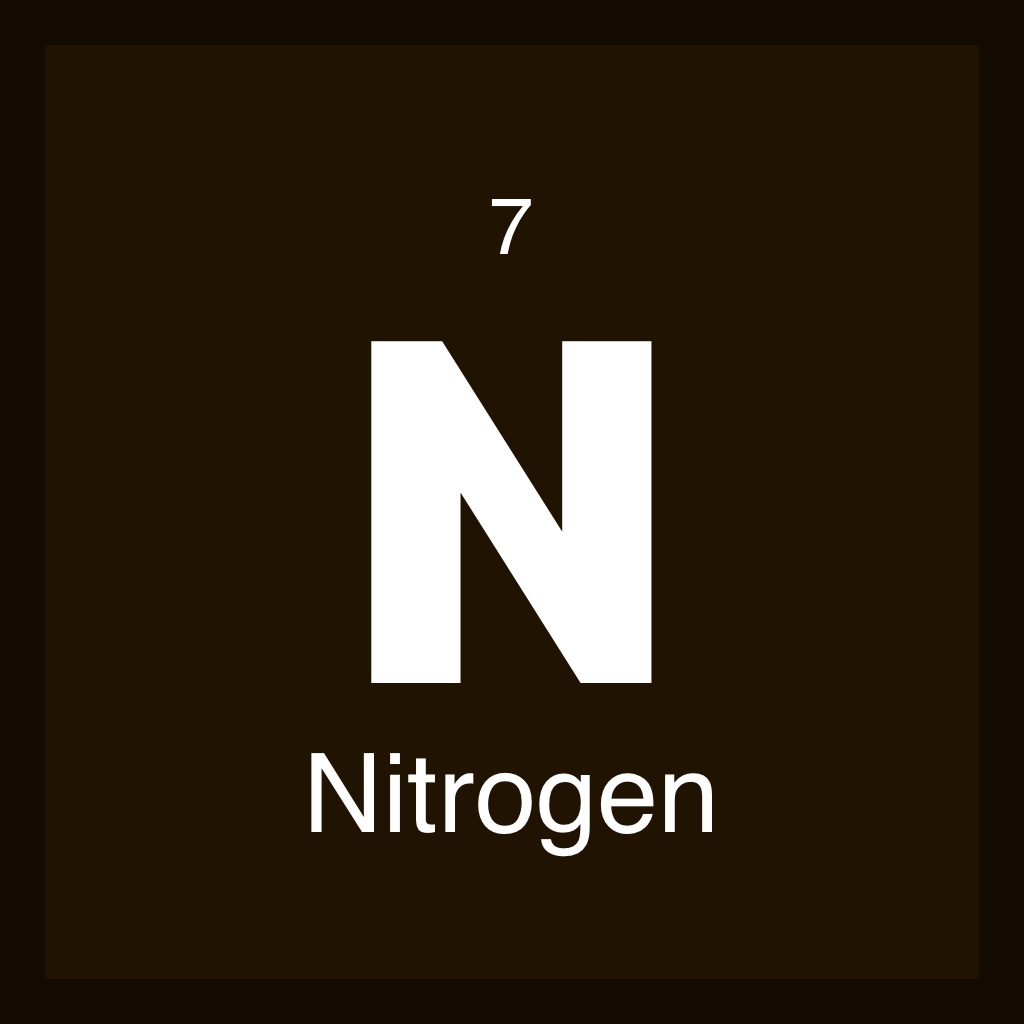
In fact, it’s often one of the gases from which we are shielding the weld.
However, in combination with argon, nitrogen can help increase corrosion resistance in steel welding.
Hydrogen (H)
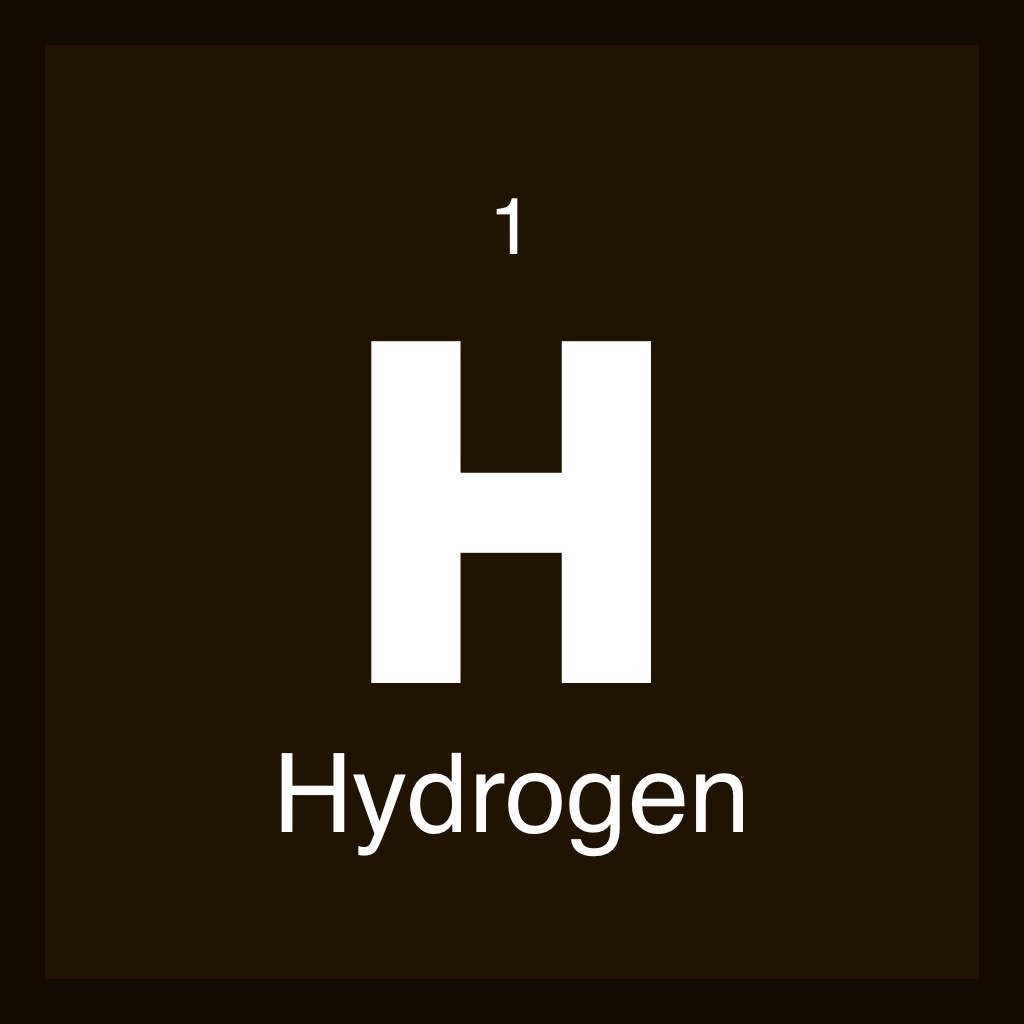
Also, like oxygen, hydrogen promotes a hot, wider bead, though it gives better penetration than oxygen.
Hydrogen is typically used for austenitic stainless steel welding.
We can also use hydrogen at higher concentrations for plasma cutting.
Common Gas Mixtures
Different gas mixtures produce different effects in a weld. Depending on the materials you’re using, you’ll want to choose your mix appropriately.
Let’s explore the most common gas mixtures in welding, what processes to use for each one, and what metal to use it on.
Argon/CO2
Argon and carbon dioxide can mix at various consistencies, anywhere from 5 to 25% carbon dioxide, for different levels of control and effect on the weld. We use these mixtures most commonly on low alloy or carbon steels and is a popular gas blend for MIG welding.
Argon/CO2 combinations help balance the most extreme effects of each gas. Higher argon helps decrease the spatter and smoke created by CO2, while high CO2 helps with short-circuit transfer and better penetration of heavier metals. Higher CO2 will begin to increase alloy depletion, and over 20% starts becoming unstable.
Welders use these gas mixtures in:
- Gas metal arc welding (GMAW) on carbon steel
- Flux-cored arc welding (FCAW) on carbon steel
- Flux-cored arc welding (FCAW) on stainless steel
Argon/O2
Introducing minimal concentrations of oxygen to argon in a shielding gas will considerably improve the downsides of pure argon. By helping with heat transfer, the oxygen increases the droplet rate and keeps the weld pool in a molten state for a more extended period. This extra time enables the metal to flow and fuse more consistently across the weld and flattens the bead.
Use argon/O2 mixtures for the following welding processes and metals:
- Gas metal arc welding (GMAW) on stainless steels
- Gas metal arc welding (GMAW) on carbon steel
Argon/CO2/O2
This tri-mix is incredibly versatile and can be used successfully on a wide variety of metal thicknesses. CO2 increases deeper penetration, while oxygen helps with efficiency, giving you a good spray transfer with a lower voltage.
Some people call this the “universal mixture” because you can use it with spray transfer, short circuit, and globular transfer. We use it in the following processes:
- Gas metal arc welding (GMAW) on carbon steel
- Gas metal arc welding (GMAW) on stainless steel in some cases
Argon/Helium/CO2
This tri-mix helps increase the heat transfer compared to pure argon, which gives a better bead result and fuse. The addition of helium works similarly to argon and oxygen, but since helium is inert, you don’t risk oxidation occurring.
Mixtures with more helium (up to 90%) promote short-circuit transfer. The argon and carbon dioxide help stabilize the arc and increase penetration.
Mixtures with more argon (up to 80%) promote spray transfer with the helium giving a smoother bead profile and wetting.
Argon/Helium/CO2 is best for the following processes:
- Gas metal arc welding (GMAW) on stainless steel
- Flux-cored arc welding (FCAW) on carbon steel
- Flux-cored arc welding (FCAW) on stainless steel
Argon/Helium
You’ll see argon/helium mixes used on reactive metals and non-ferrous metals like copper, nickel alloys, or aluminum. Usually, you can use pure argon, but higher helium concentrations work on heavier materials, reducing penetration.
The helium increases the heat on the surface, giving a more fluid weld pool. The fluidity allows air bubbles or impurities to rise to the surface and escape, reducing the porosity of the final product.
We use this mix most commonly in:
- Gas metal arc welding (GMAW) on aluminum
- Gas tungsten arc welding (GTAW) on stainless steel or aluminum
Argon/Nitrogen
Though not a typical mix, argon and nitrogen work together if you keep a very low nitrogen concentration. The added nitrogen helps produce a completely austenitic (low-corrosive, non-magnetic) stainless steel weld.
Higher nitrogen levels increase fumes and porosity.
Argon and nitrogen mixes can be used with:
- Gas metal arc welding (GMAW) on 347 stainless steel
Argon/Helium/O2
A mixture of argon, helium, and oxygen can increase arc energy and surface heat when welding on ferrous materials. You would typically use just helium and argon for this purpose on non-ferrous materials.
This tri-mix increases the fluidity of the weld pool, giving an even bead profile and less porosity.
- Gas metal arc welding (GMAW) on ferrous materials
Argon/Hydrogen
Argon and hydrogen is a less common mixture but can be used to weld austenitic steel using gas tungsten arc welding (GTAW), also known as the TIG method.
Hydrogen is added to argon to increase the speed and bead profile of the final weld. It helps maintain a narrow and precise arc while increasing heat transmission.
- Gas tungsten arc welding (GTAW) on austenitic steel
Argon/CO2/Hydrogen
Low amounts of carbon dioxide and hydrogen can be added to argon to support arc stability, minimize carbon pick-up, and increase wetting on stainless steel welding. You should not use this blend on low alloy steels as it will cause significant issues with cracking.
- Metal inert gas (MIG) welding on stainless steel
Related read: What size do welding gas bottles come in?
Gases in Oxy-fuel Welding
Oxy-fuel welding isn’t as popular now as it once was – thanks to the development and widespread availability of arc welding. This type of welding was invented in 1903 and uses a simple flame torch to weld metals.
Arc welding electrodes were developed in the 1920s and provided a more precise and faster welding method that could also be used to weld highly reactive metals.
However, many people still use oxy-fuel welding to create artwork or weld in smaller or home-based shops. Oxy-fuel welding uses gas or combustible liquid to fuel the combustion.
Let’s explore the top fuels used in this type of welding. Each of them is combined with oxygen to create a flame.
- Acetylene – This is the primary fuel used for oxy-fuel welding. The benefits are a high burn temperature that makes it ideal for welding high-strength steels and a reducing zone around the weld area that helps clean the metal.
- Propane – Propane has a much lower flame temperature than acetylene and no reducing zone. Because of this, propane isn’t ideal for welding but is better than acetylene for cutting, heating, or bending. You should use an injection torch for the best results.
- Propylene – Propylene is most similar to propane and works best for cutting rather than welding. Using propylene for welding will usually result in a brittle weld. Propylene also works best with an injector torch and keeps the tip clean.
Overall, most welders have moved on from oxy-fuel welding, but it’s good to know the basics.
Bonus: PDF Gas Selection Chart
If you are looking for a handy gas selection chart then you can download it using the link below:
Wrapping it Up
For welding pros and beginners alike, working knowledge of all the types of welding gas is critical to welding success. You can use various mixtures to achieve varied results and protect your materials from damage.
Use this guide to keep track of the various gases and mixtures on your next welding job.
Resources:
https://www.sciencedirect.com/topics/materials-science/inert-gases
https://www.sciencedirect.com/topics/earth-and-planetary-sciences/reactive-gas
https://www.sciencedirect.com/topics/engineering/oxide-inclusion
